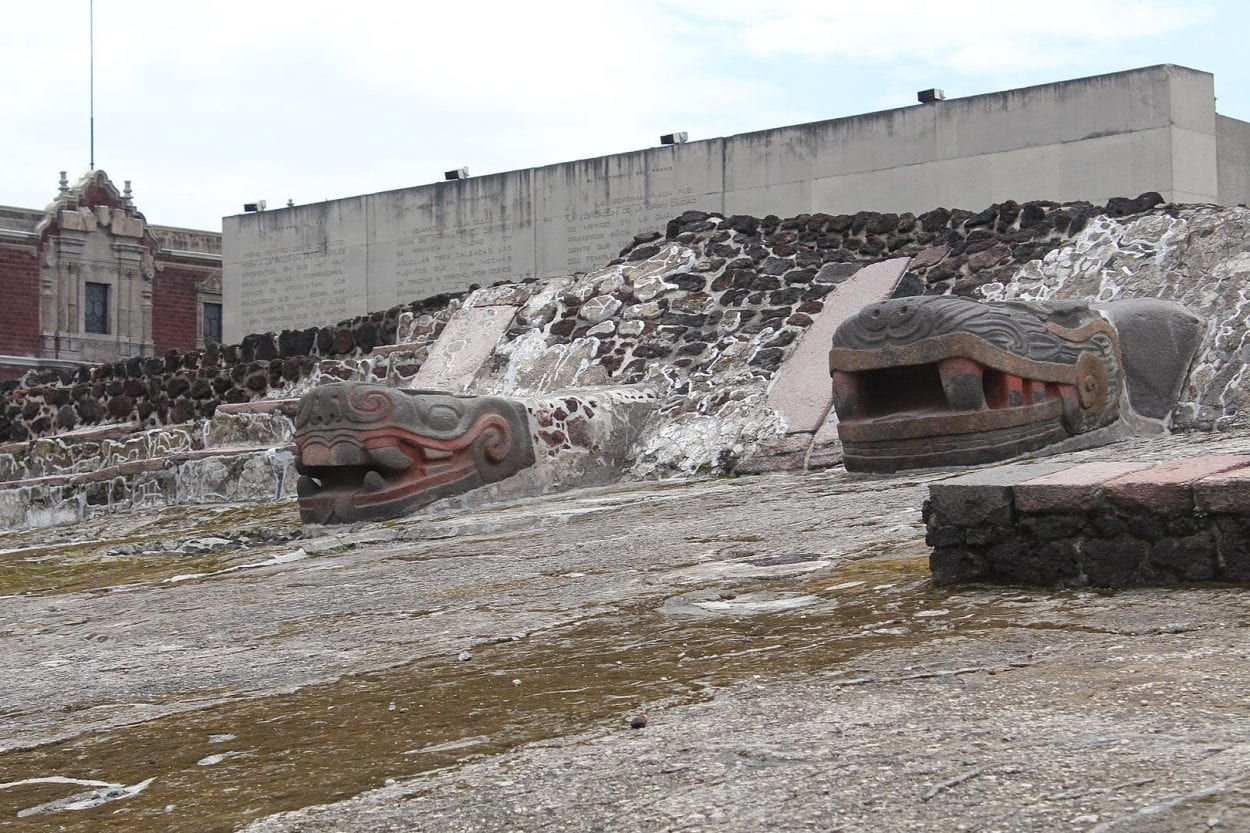Tenochtitlan was the capital of the Aztec civilisation, situated on a raised islet in the western side of the shallow Lake Texcoco, which is now the historic part of present-day Mexico City.
The altepetl (city) was founded by the Mexica, a Nahuatl-speaking indigenous people of the Valley of Mexico, who entered the Basin of Mexico after the decline of the Toltec civilisation. Adjacent to Tenochtitlan, a dissident group also founded the altepetl of Mexico-Tlatelolco (“Place of the Spherical Earth Mound”) with its own dynastic lineage.
According to mythology, the Mexica were searching for a destined home, where “an eagle with a snake in its beak, perched on a prickly pear cactus”. Upon arriving at Lake Texcoco, they persuaded the king of Culhuacan, a small city-state, to allow them to settle on a relatively infertile patch of land called Chapultepec (Chapoltepēc, “in the hill of grasshoppers”).
The Mexica supposedly sacrificed one of the daughters of the Culhuacan rulers, flaying her skin, on the command of their god Xipe Totec. This led to the Culhuacan attacking the Mexica, driving them to the refuge of an infertile island “among the stone-prickly pear cactus fruit”, where they founded their new city in the year “ōme calli” around AD 1325 to 1345.

The Mexica transformed the island using the chinampa system, creating small, rectangular areas of fertile arable land to grow crops on the shallow lake beds.
The settlement rapidly grew into a city-state, forming part of the Triple Alliance of Tenochtitlan, Texcoco, and Tlacopan. Tenochtitlan would emerge as the dominant power and the de facto rulers of the alliance, conquering adjacent city-states and creating an empire that relied on an imperial tribute system.
Tenochtitlan was laid out symmetrically, divided into four zones covering an area of 3212 acres. Each zone contained 20 calpulli (districts), crossed by tlaxilcalli (streets) that connected to large causeways leading to the mainland. Within each calpulli was a central tiyanquiztli (marketplace), along with the various dwellings and places of industry for weavers, sculptors, and potters.

At the centre of Tenochtitlan was a ceremonial complex containing public buildings, temples, and palaces, including: the Templo Mayor, which was dedicated to the Aztec patron deity Huitzilopochtli and the Rain God Tlaloc; the temple of Quetzalcoatl; the tlachtli (ball game court) with the tzompantli or rack of skulls; the Sun Temple, which was dedicated to Tonatiuh; the Eagle’s House, which was associated with warriors and the ancient power of rulers; the platforms for the gladiatorial sacrifice; and some minor temples.
By the arrival of the Spanish conquistadors in AD 1519, the city was at its apex, with an estimated population of between 200,000–400,000 inhabitants. The people of Tenochtitlan were soon exposed to diseases to which they had no immunity, devasting the population, with estimates suggesting more than 50% of the region’s population succumbed to smallpox.
The Spanish conquistadors, aided by an alliance of indigenous tribes and former tributary city-states, laid siege to Tenochtitlan for 93 days, until the Mexica surrendered on August 13, AD 1521, marking the beginning of Spanish hegemony in central Mexico.
Header Image – Painting of Tenochtitlan Ceremonial Center – Image Credit : Gary Todd – Public Domain





